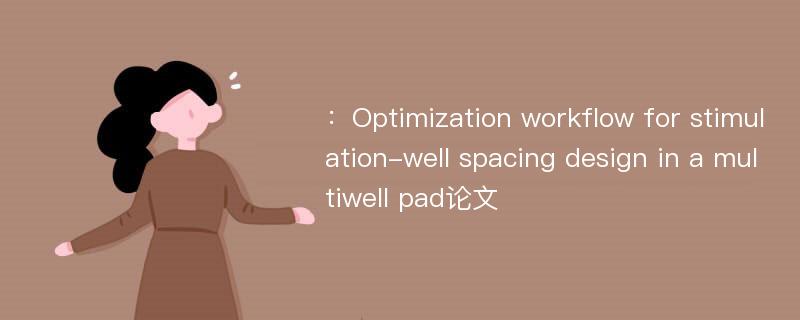
本文主要研究内容
作者(2019)在《Optimization workflow for stimulation-well spacing design in a multiwell pad》一文中研究指出:A flow mathematical model with multiple horizontal wells considering interference between wells and fractures was established by taking the variable width conductivity fractures as basic flow units.Then a semi-analytical approach was proposed to model the production performance of full-life cycle in well pad and to investigate the effect of fracture length, flow capacity, well spacing and fracture spacing on estimated ultimate recovery(EUR).Finally, an integrated workflow is developed to optimize drilling and completion parameters of the horizontal wells by incorporating the productivity prediction and economic evaluation.It is defined as nested optimization which consists of outer-optimization shell(i.e., economic profit as outer constraint) and inner-optimization shell(i.e., fracturing scale as inner constraint).The results show that, when the constraint conditions aren’t considered, the performance of the well pad can be improved by increasing contact area between fracture and formation, reducing interference between fractures/wells, balancing inflow and outflow between fracture and formation, but there is no best compromise between drilling and completion parameters.When only the inner constraint condition is considered, there only exists the optimal fracture conductivity and fracture length.When considering both inner and outer constraints, the optimization decisions including fracture conductivity and fracture length, well spacing, fracture spacing are achieved and correlated.When the fracturing scale is small, small well spacing, wide fracture spacing and short fracture should be adopted.When the fracturing scale is large, big well spacing, small fracture spacing and long fracture should be used.
Abstract
A flow mathematical model with multiple horizontal wells considering interference between wells and fractures was established by taking the variable width conductivity fractures as basic flow units.Then a semi-analytical approach was proposed to model the production performance of full-life cycle in well pad and to investigate the effect of fracture length, flow capacity, well spacing and fracture spacing on estimated ultimate recovery(EUR).Finally, an integrated workflow is developed to optimize drilling and completion parameters of the horizontal wells by incorporating the productivity prediction and economic evaluation.It is defined as nested optimization which consists of outer-optimization shell(i.e., economic profit as outer constraint) and inner-optimization shell(i.e., fracturing scale as inner constraint).The results show that, when the constraint conditions aren’t considered, the performance of the well pad can be improved by increasing contact area between fracture and formation, reducing interference between fractures/wells, balancing inflow and outflow between fracture and formation, but there is no best compromise between drilling and completion parameters.When only the inner constraint condition is considered, there only exists the optimal fracture conductivity and fracture length.When considering both inner and outer constraints, the optimization decisions including fracture conductivity and fracture length, well spacing, fracture spacing are achieved and correlated.When the fracturing scale is small, small well spacing, wide fracture spacing and short fracture should be adopted.When the fracturing scale is large, big well spacing, small fracture spacing and long fracture should be used.
论文参考文献
论文详细介绍
论文作者分别是来自Petroleum Exploration and Development的,发表于刊物Petroleum Exploration and Development2019年05期论文,是一篇关于,Petroleum Exploration and Development2019年05期论文的文章。本文可供学术参考使用,各位学者可以免费参考阅读下载,文章观点不代表本站观点,资料来自Petroleum Exploration and Development2019年05期论文网站,若本站收录的文献无意侵犯了您的著作版权,请联系我们删除。
